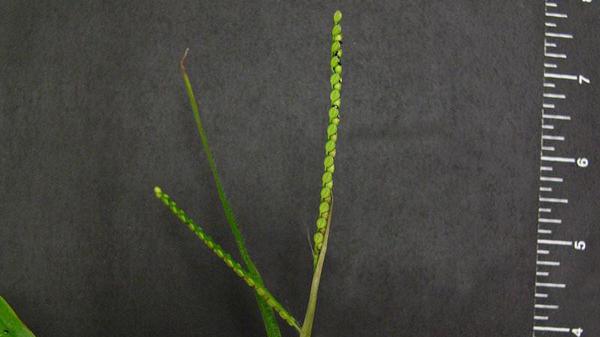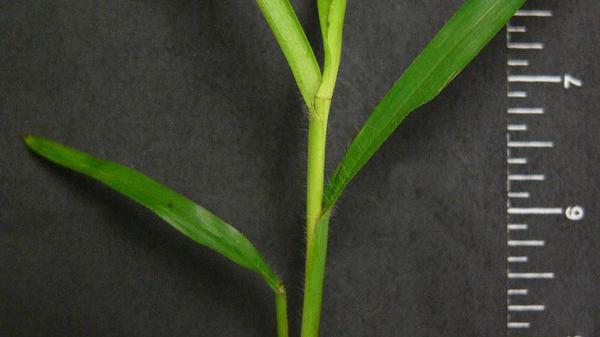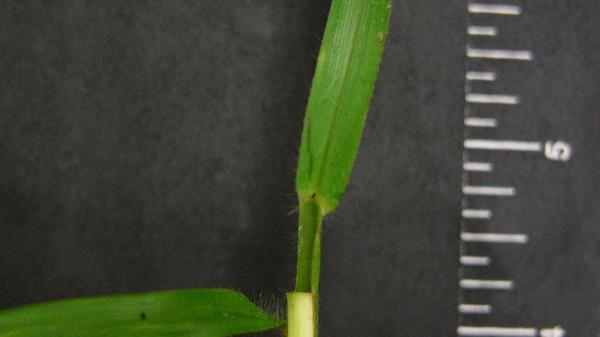Description
Thin (bull) paspalum (Paspalum setaceum) is common in sandy soils in disturbed, open areas throughout the Coastal Plain region. Dallisgrass, field paspalum, and thin paspalum resemble each other, and thin paspalum is often mistakenly called dallisgrass. Thin paspalum has a glossier, more shiny leaf when young than dallisgrass. Dallisgrass leaf appearance is very similar to crabgrass, which is a dull green appearance.
Cultural Control
Perennial grass weeds are not desirable as turfgrass species under any conditions. Therefore, every effort should be made to prevent these weedy grasses from becoming established in turf, as selective control measures are usually difficult. Selection of adapted turfgrass species and cultivars and the use of cultural practices are important in minimizing weedy grass encroachment and competition. Management practices include: (1) mowing at the recommended height for the selected turfgrass and removing clippings when seedheads of grassy weeds are present; (2) applying the proper amount of nitrogen at the correct time according to the turfgrass present; and (3) using soil tests to determine needed nutrients and lime.
Species Data
- SEEDHEAD / FLOWER
- raceme; 1-6 spikelets per stalk
Figure 1
- raceme; 1-6 spikelets per stalk
- VERNATION TYPE
- rolled
Figure 2
- rolled
- LIGULE TYPE
- small, membranous w/ fringe of hairs on top
Figure 3
- small, membranous w/ fringe of hairs on top
- GROWTH SEASON / LIFE CYCLE
- perennial weed
- AURICLE TYPE
- absent
- LEAF BLADE TIP SHAPE
- sharp-pointed; hairy to almost smooth; wavy edges
- STOLON PRESENCE
- absent
- RHIZOME PRESENCE
- present; short
- COLLAR TYPE
- continuous
- SHEATH MARGIN
- open; there is a fringe of hair along the margin of the sheath
- SHEATH TYPE
- flattened
Publication date: Nov. 8, 2017
N.C. Cooperative Extension prohibits discrimination and harassment regardless of age, color, disability, family and marital status, gender identity, national origin, political beliefs, race, religion, sex (including pregnancy), sexual orientation and veteran status.



